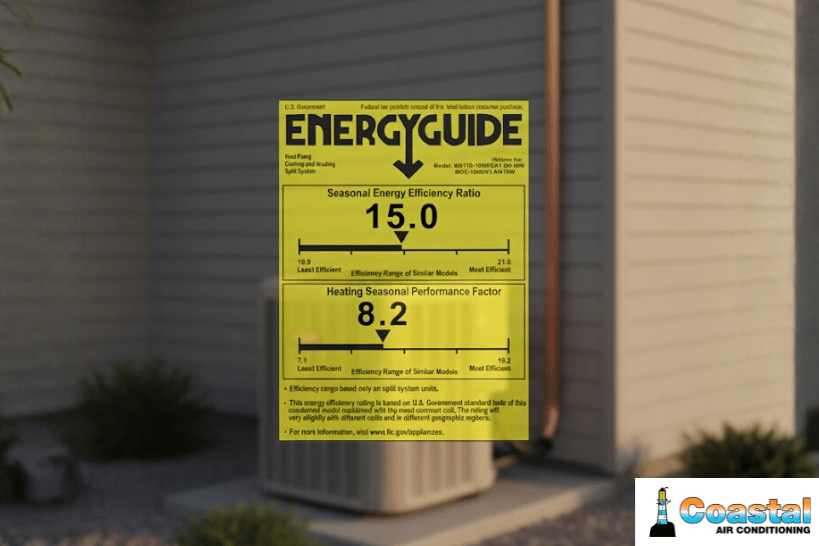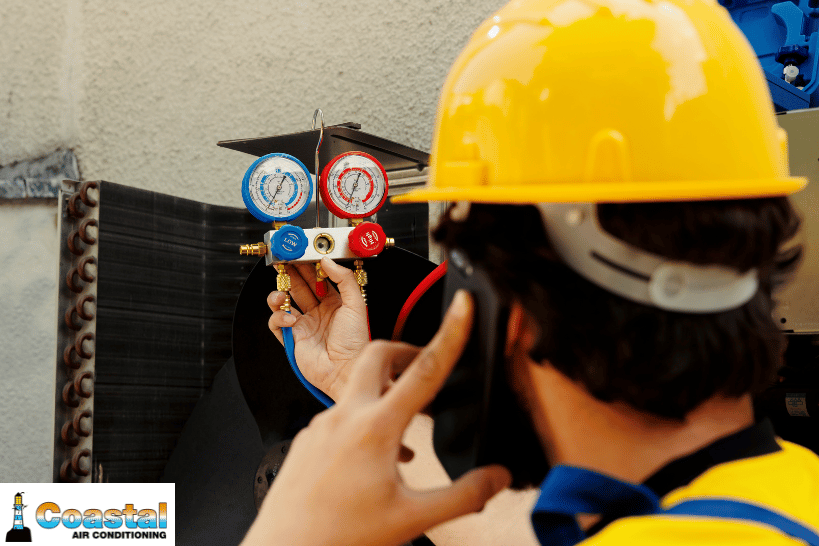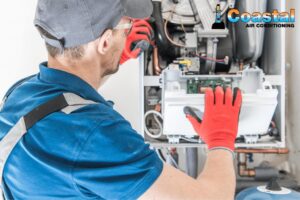Choosing an air conditioning system is more complicated than picking the biggest or cheapest option. In 2025, the terms SEER and SEER2 have become necessary to understand if you’re a New Jersey homeowner thinking about a new HVAC system.
This guide will help you learn what those terms mean, why they matter, and how they affect your energy bills.

What Is SEER?
SEER stands for Seasonal Energy Efficiency Ratio. It measures how efficiently a cooling system operates over a typical cooling season.
Here’s the simple version: SEER is the ratio of cooling output (in BTUs) to the energy a unit uses (in watt-hours). The higher the SEER rating, the more efficient the system.
A cooling system with a SEER rating of 14 produces the same cooling output as a system with a SEER of 10, but it uses a lot less energy.
SEER helped homeowners compare systems. But it had limits. The old testing method didn’t fully reflect how HVAC systems work in homes. That’s where SEER2 comes in.
What Is SEER2?
SEER2 is the Department of Energy’s new efficiency standard. It launched in 2023 and changes how units are tested for energy efficiency. The goal was to make test results reflect the real-world performance of cooling systems.
The main difference is how the static pressure is set during testing. SEER assumed ideal conditions. SEER2 introduces higher static pressure to better imitate how ductwork affects airflow.
This matters because most homes don’t have perfect ductwork. SEER2 adds friction to the test, closer to how systems actually run.
If you compare two systems with the same cooling output, the SEER2 number will almost always be lower than the SEER number. That doesn’t mean the unit is less efficient. It means the test is tougher.
SEER vs. SEER2: Key Differences
Here’s a simple breakdown:
| Feature | SEER | SEER2 |
| Test Conditions | Ideal lab environment | Realistic static pressure |
| Real-World Accuracy | Less accurate | More accurate |
| Rating Numbers | Higher values (e.g. SEER 14) | Slightly lower (SEER2 13.4 ≈ SEER 14) due to stricter testing |
| Launched | Before 2023 | 2023 |
| Used in 2025 Standards | No, phased out in federal regulations after 2023 | Yes, required for all new systems starting in 2023 |
| Applies to | Older air conditioning and heat pump systems | All new split systems and most central HVAC systems sold after 2023 |
| Purpose | Compare cooling efficiency under ideal settings | Measure cooling efficiency under real-world conditions |
For example, a system that once had a SEER of 14 might now have a SEER2 rating of around 13.4. That doesn’t mean it’s worse—it just reflects updated test protocols.
What New Jersey Homeowners Need to Know in 2025
The Department of Energy set new standards in 2023. Northern states, including New Jersey, are under updated efficiency rules in 2025.
Here’s what you should expect:
- Split-system air conditioners must now meet a SEER2 minimum.
- New cooling systems must include these updated ratings to be installed.
- Old systems may still run, but if you replace your HVAC system, it must follow SEER2 guidelines.
For homeowners, this change affects how you shop, compare, and budget for replacement systems. You’ll need to compare SEER2 numbers, not SEER, when looking at efficiency ratings today.
This also shifts how you look at long-term energy savings. Systems that meet higher SEER2 standards help control your energy bills over time.
Should You Upgrade Your Cooling System?
Start by checking the SEER rating on your current unit. Systems installed before 2010 may have a SEER of 10 or 12. That’s far below today’s performance expectations.
Signs it might be time to replace:
- Your energy bills spike every cooling season.
- Repairs cost more than half the value of a new unit.
- Your system is more than 12 to 15 years old.
Switching to a modern system with a higher SEER2 rating can improve energy savings and comfort. You also get more accurate performance expectations. That accuracy helps with budgeting and planning—not just in kilowatts, but also in dollars spent.

Rebates, Incentives, and Tax Credits
Many homeowners can offset the cost of a new system through rebates and tax credits. These offers often apply to systems with high efficiency ratings.
Look for programs that mention:
- High-efficiency air conditioning systems
- Energy Star-certified heat pumps
- SEER2-qualified HVAC systems
While we’re not listing specific programs here, these incentives are common. Electric companies and state energy offices often provide them.
When speaking with your HVAC contractor, ask:
- “Does this system qualify for any state or federal rebates?”
- “Is this unit certified under current SEER2 standards?”
A reputable contractor will include this in your quote or proposal.
Make an Informed Choice Before the Next Cooling Season
The switch from SEER to SEER2 changes how you compare air conditioning systems, but not what matters most: performance, savings, and comfort.
New Jersey homeowners upgrading their HVAC systems in 2025 should look for units with good SEER2 ratings. Compare those numbers, not just the brand names. Talk to Coastal Air Conditioning in New Jersey—their technicians are truly adept at Department of Energy guidelines and can walk you through efficiency, system performance, and available financing options.
Before the next cooling season starts, take time to understand your options using your system’s efficiency ratings. The right decision today can lower your energy bills for years to come.




